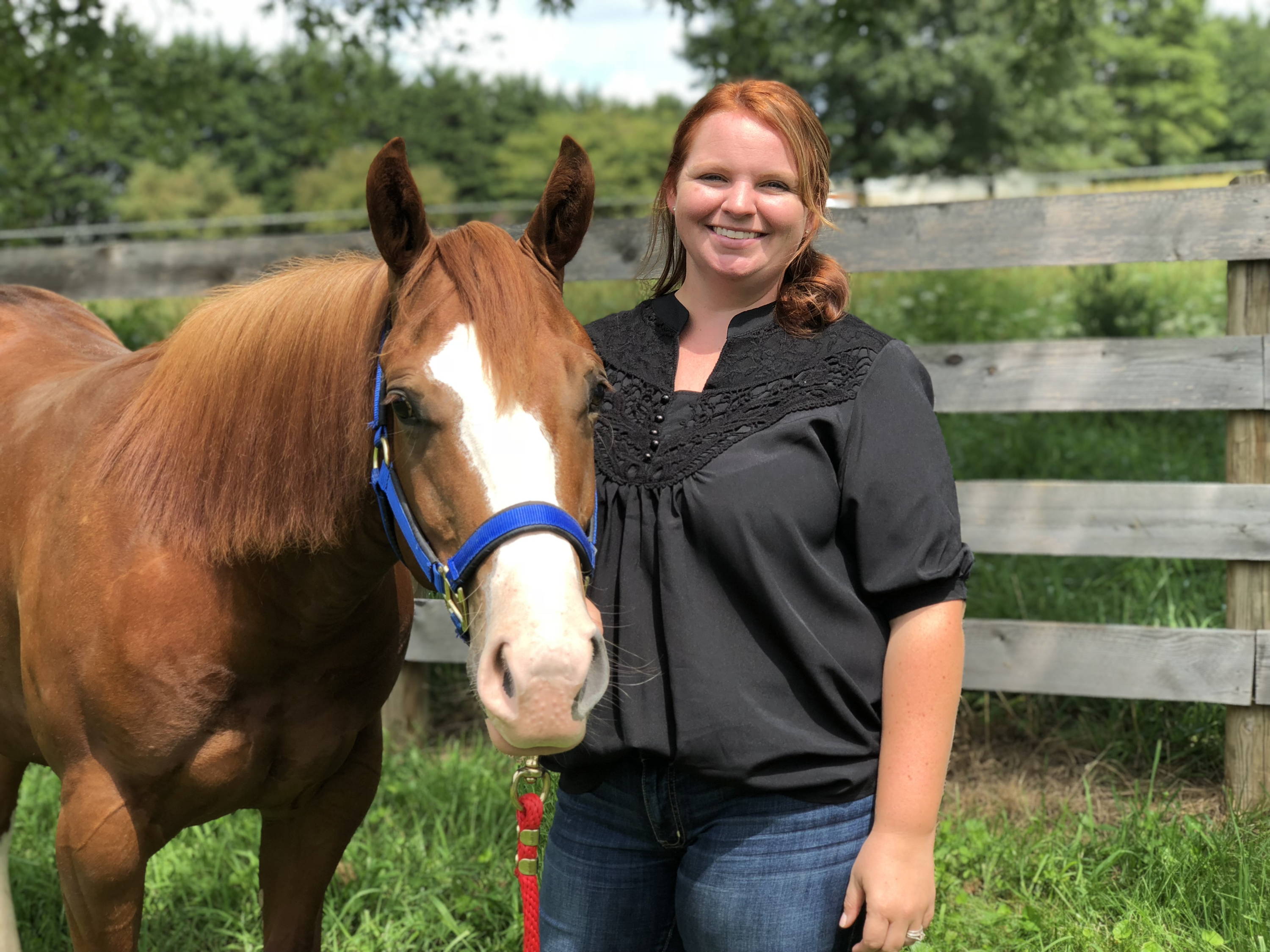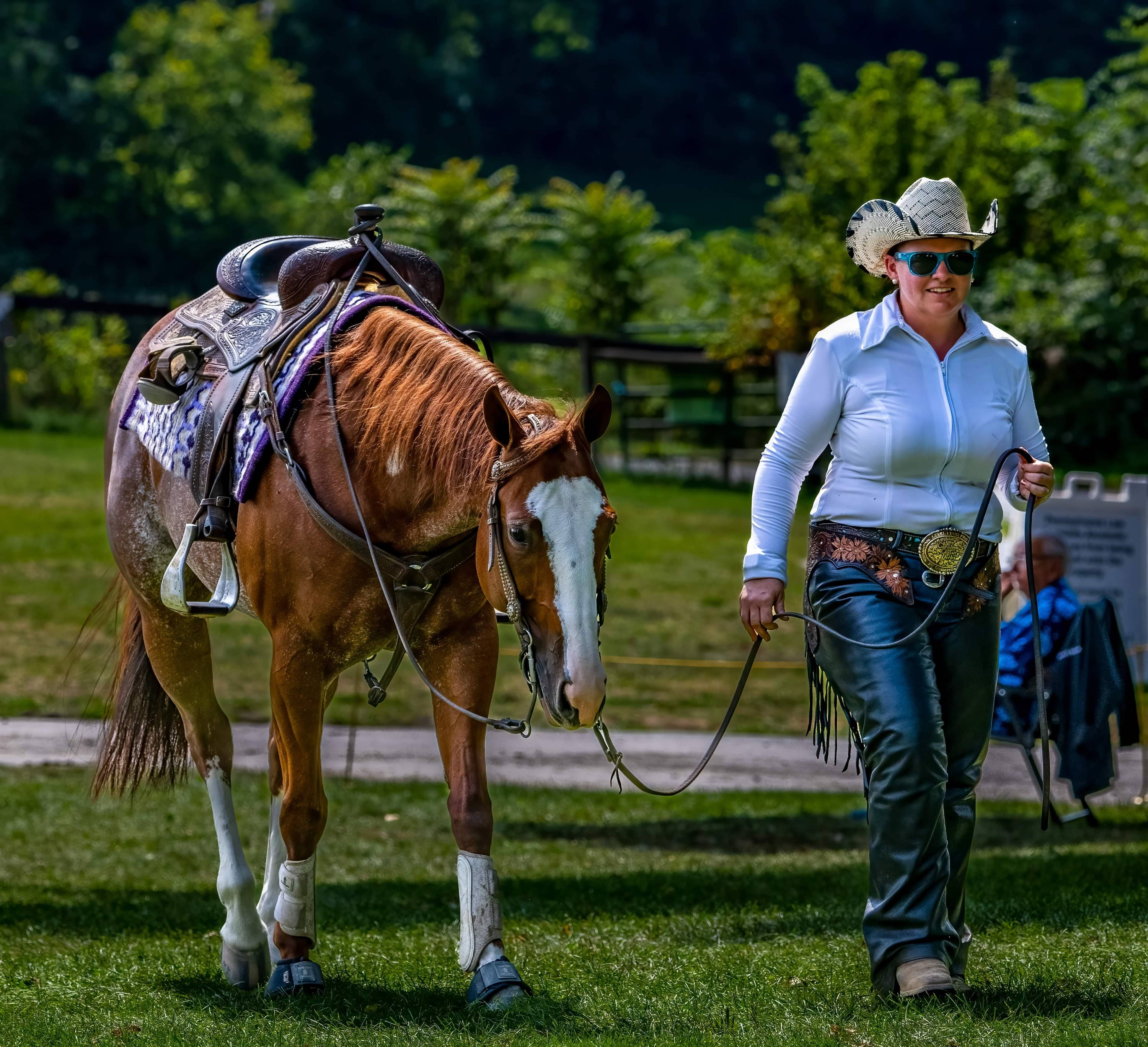Practical Approach to Equine Respiratory Health
Maryland Veterinarian enlists Owners in Campaign for Equine Respiratory Health.
By Kim Miller
Even “Good” Hay Is Dirty
Hay’s role in respiratory health leads many of Dr. Snyder’s educational discussions. “A lot of my clients say, ‘Oh, my hay is not dusty or dirty.’ I tell them to put it in a muck tub and tell me that what sifts down to the bottom is not dirty. We have a lot of natural pollens, dust, mould and fungal things. Our warm, often moist, environment is ideal for those spores to grow.”

Reducing dust in the equine environment is an urgent call from veterinarians around the world, and Dr. Snyder is doing her part.
“I have a list of environmental recommendations to help manage our respiratory cases,” she says. “The hardest thing is that there’s no cure for the disease. We could spend a lot of money on medications and inhalers, but if we don’t change the management strategies, we’re not going to make headway.”
A Horse & Human Condition
The fact that so many people can relate to asthma from personal experience helps in the effort to educate horse owners and stable managers about respiratory health. Veterinary thought leaders promote the phrase “Equine Asthma Spectrum” to convey the similarities in respiratory conditions for horses and humans. “A lot of our clients suffer from allergies or asthma themselves,” Dr. Snyder notes. “They know what sets them off and how important it is to try to avoid that.”
In theory, reducing triggers in the environment is easy.
In practice, it’s not. As a horse owner herself, Dr. Snyder knows this first-hand.
“Horses live in a very dusty environment,” she acknowledges. “They eat hay, they live in shavings. And for those who board their horse, it’s easy to feel like you’re being a pain in the butt to the barn manager in asking for special treatment for your horse.”
Implementing better barn air strategies is always challenging, and always worthwhile.
As with most aspects of horse care, the process involves trade-offs. For example, a horse with existing respiratory problems might be best living outdoors some or all of the day. But if that’s on grass pasture, there’s a risk of getting fat, or worse, triggering laminitis from eating too much at once – especially if the grass has a high sugar content.
Dust Busting

Hay storage tops Dr. Snyder’s list of barn dust-busting suggestions. “I’ve had horses affected with respiratory problems just because their hay was stored in the stall next to them, or in the aisleway outside their stall.” Storing hay above horses is not good either, as the dust drifts down into their stalls.
Storing hay outside the barn is safest for dust management and fire prevention. “Keeping hay outside is always best for safety and it’s the cleanest way from the respiratory health perspective.” If hay needs to be stored in the horse barn, Dr. Snyder suggests keeping it at one end of the barn, as far away from horses as possible, and moving it around as little as possible.
Catch It Early
Catching respiratory problems in their earliest stages is critical to effective treatment. “Often, when we as veterinarians get called in, the respiratory problem has been going on long enough to cause disease in their lungs.”
Coughs are a clue, Dr. Snyder urges. “Horses occasionally cough at the beginning of a ride to get the mucus up and out, but if they are pulling you out of the saddle with a cough, or coughing every time they stick their nose into their hay, it’s worthwhile to do a respiratory exam and to start talking about environmental strategies.”
Keeping a diary of the horse’s vital statistics and behavior patterns is a great way to catch respiratory issues early. In addition to noting temperature and respiratory rate, it’s good to record if the horse is coughing, even just occasionally, during exercise – in an indoor or outdoor arena – or while eating. “We always want to address the problem as soon as possible,” Dr. Snyder concludes.




















